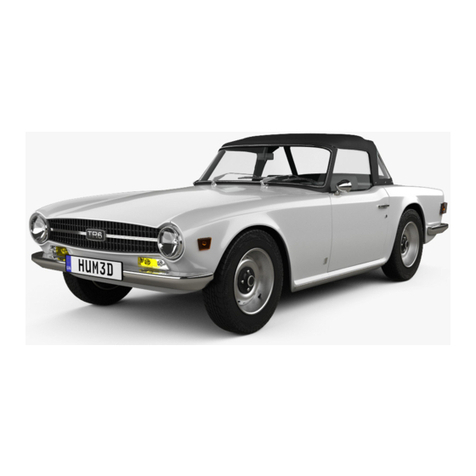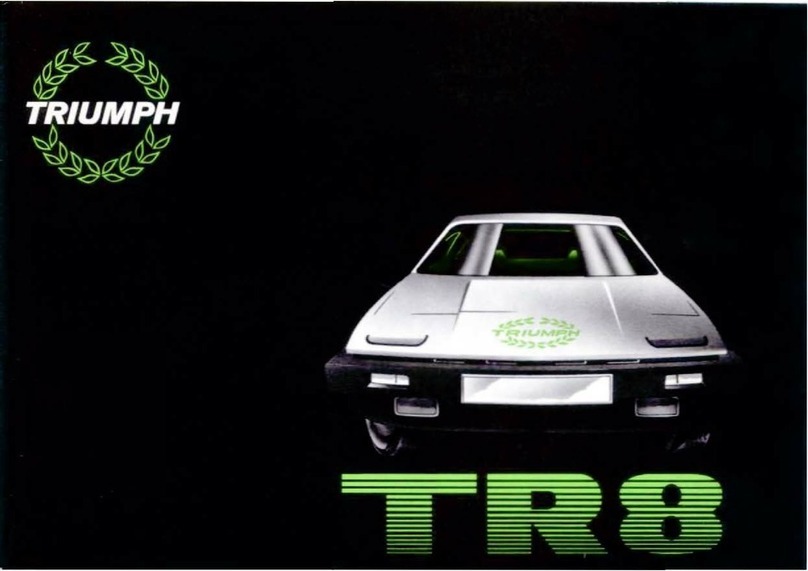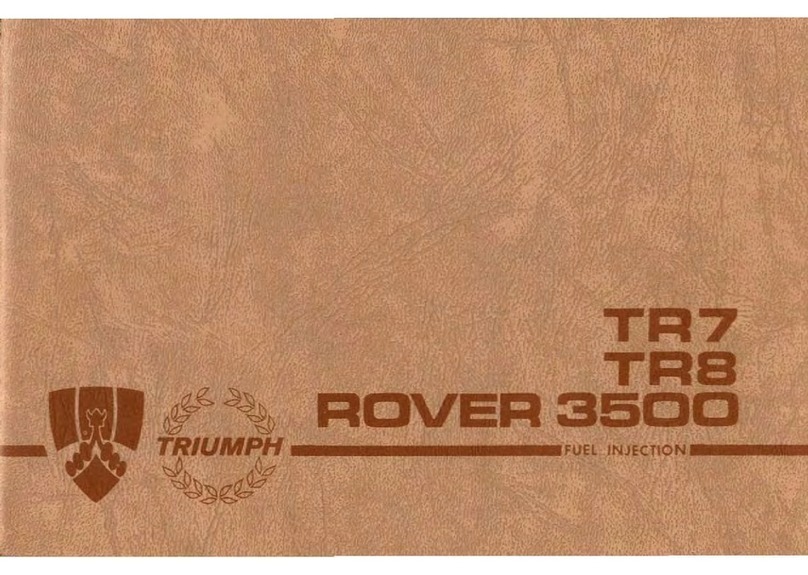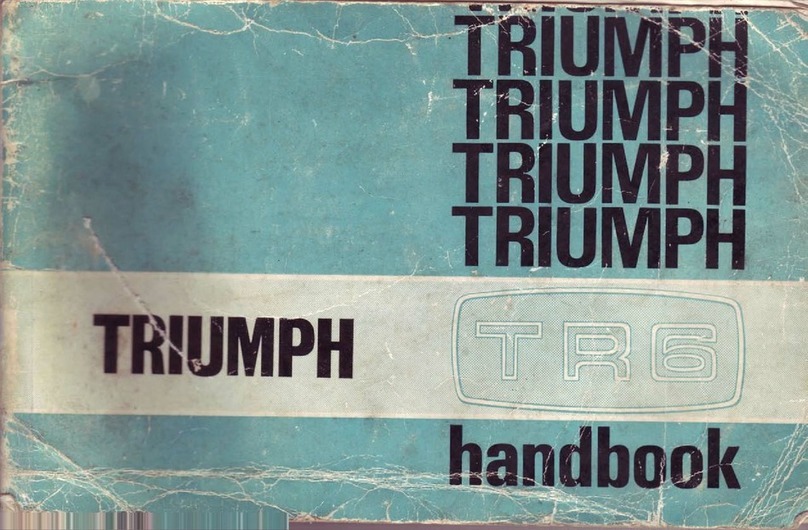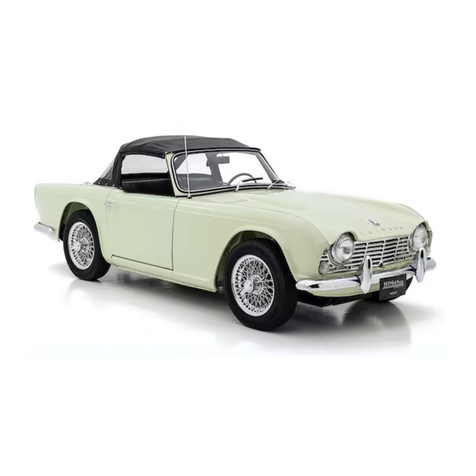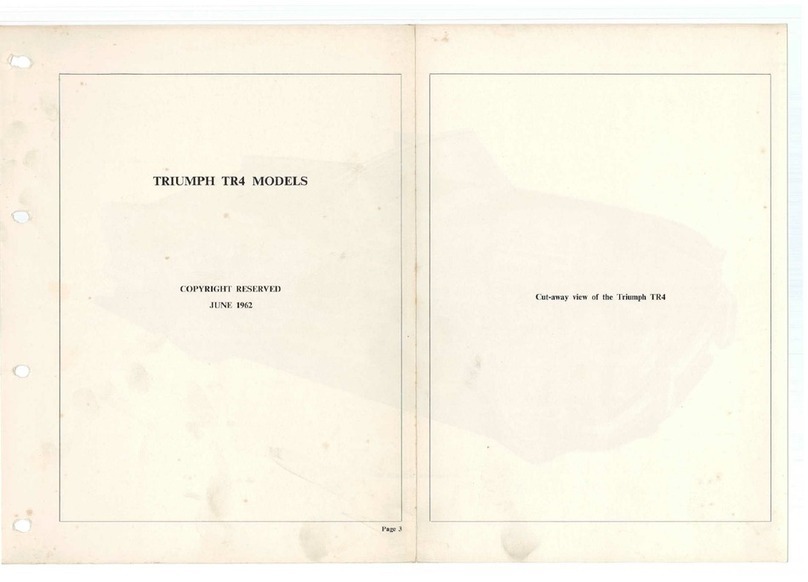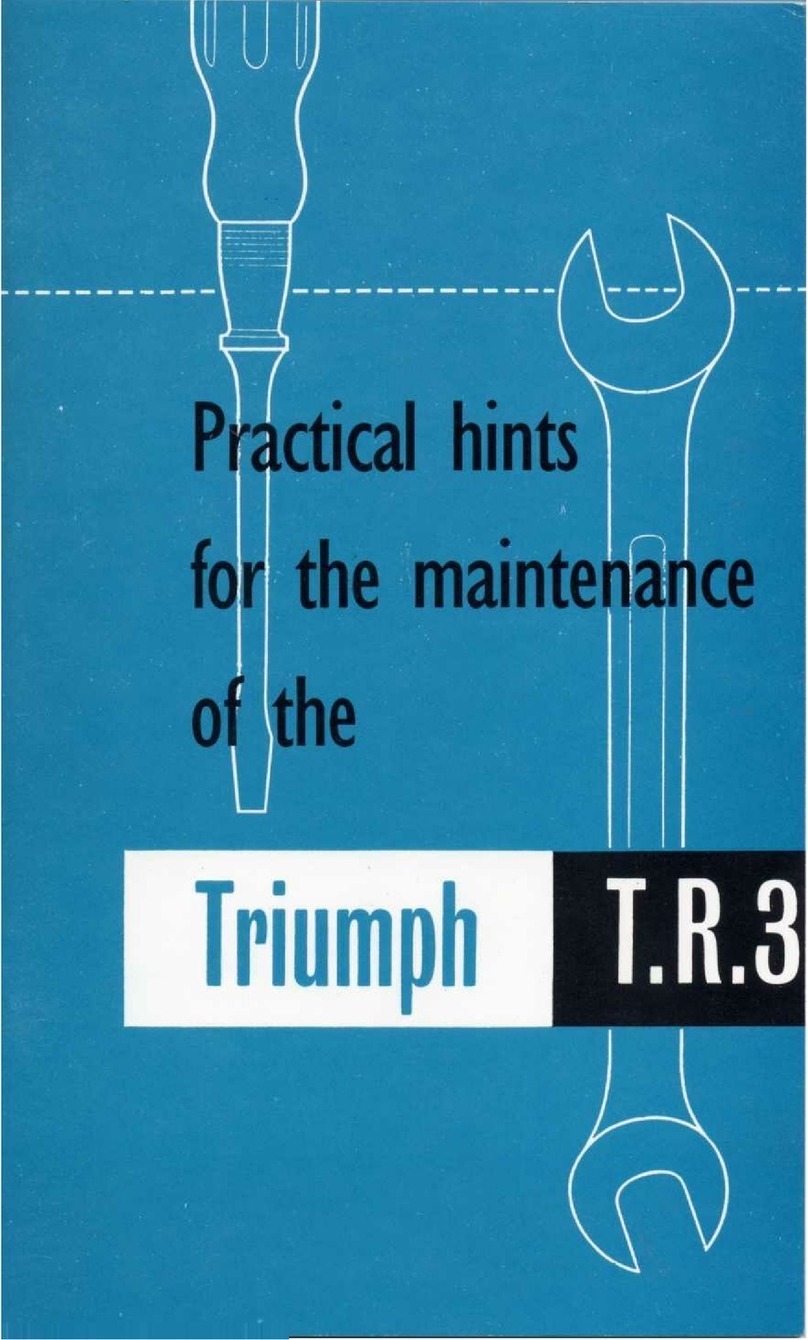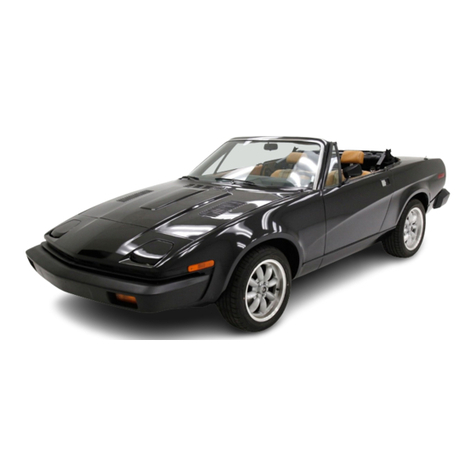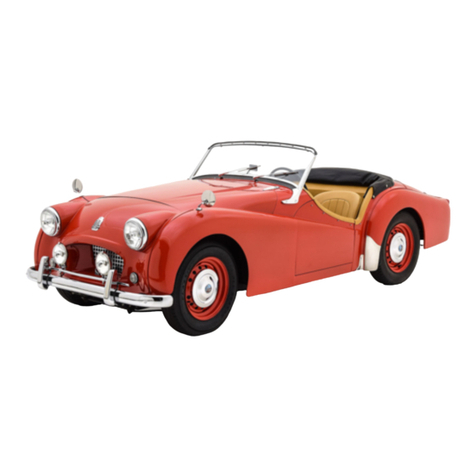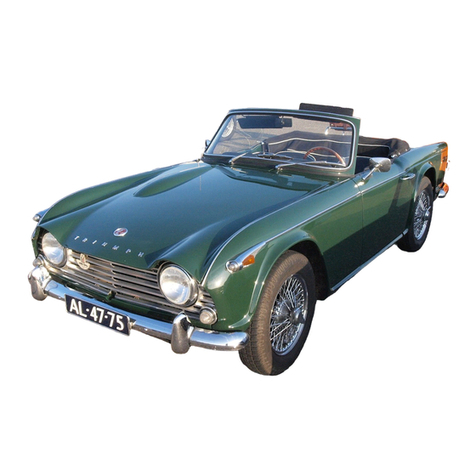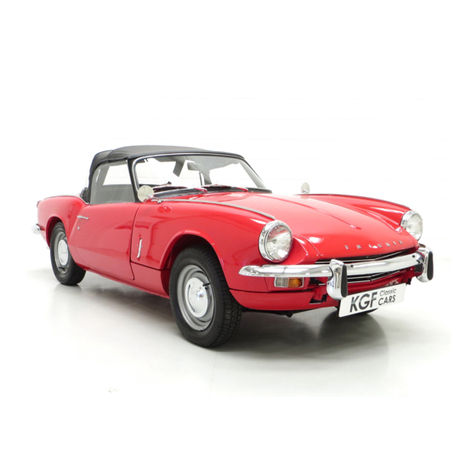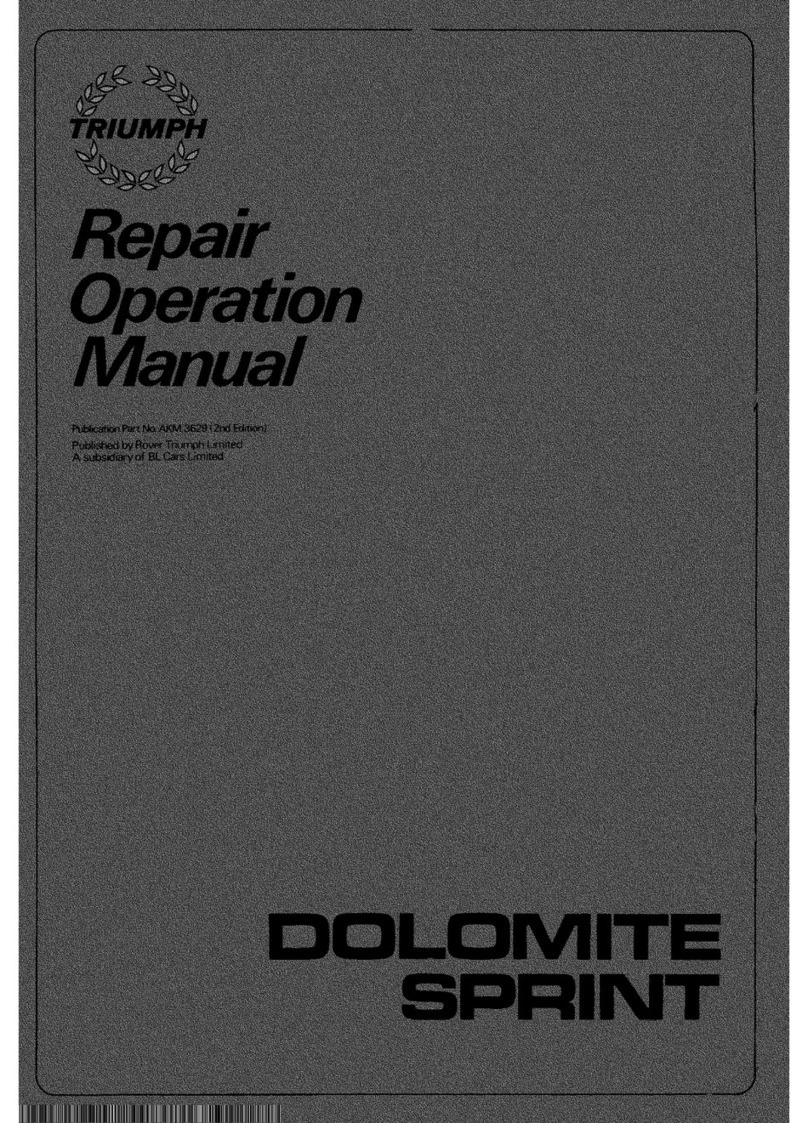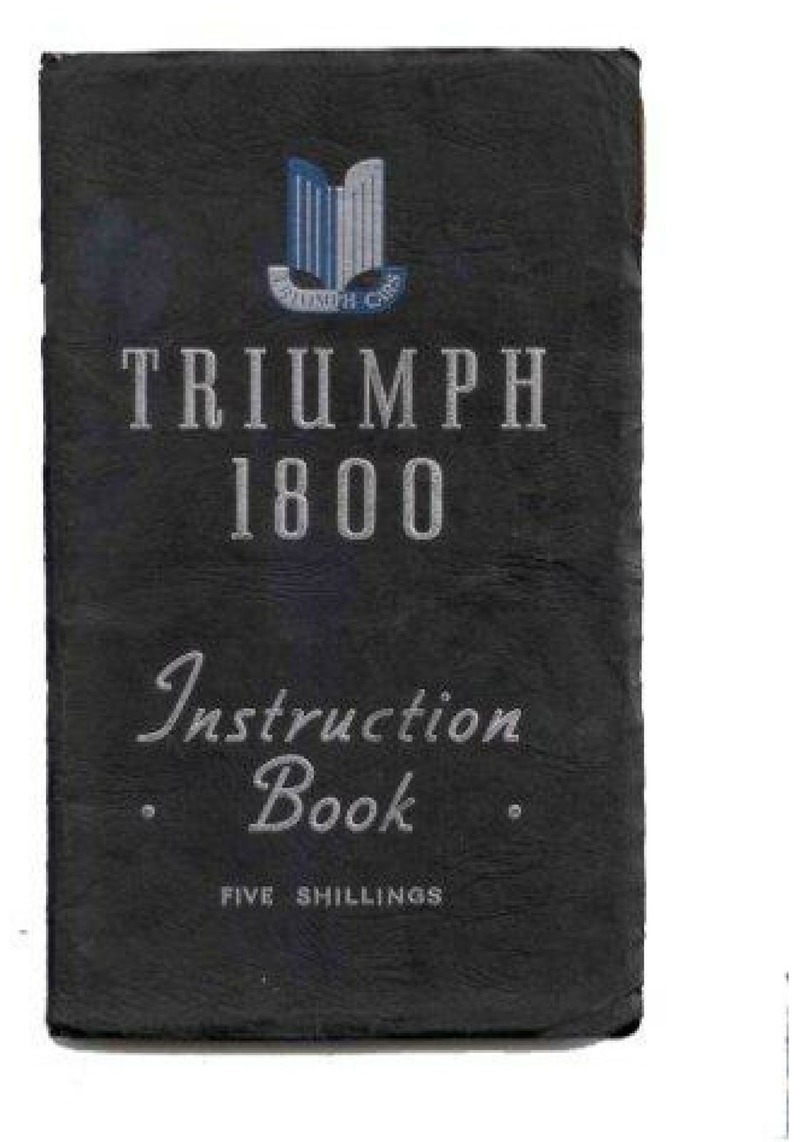
CONTROLS, INSTRUMENTS AND INDICATORS
Hazard Warning Switch and Indicator (7)
i
If thevehicle is immobilised and constitutes a hazard to other
vehicles, warning may be given by using the "hazard warning
system". To operate, pull the switch (7) when all turn-signal
lights will flash intermittently.
When the hazard switch is operated, a bulb in the switch will
flash in unison with the exterior warning lamps.
Horn Push (8)
Press to operate the horns.
Tachometer
(9)
The tachometer indicates the engine speed in revolutions per
minute andcombines two warning indicators(39,40. See Fig. 5).
The speed range within the colored segments is subject to the
"Recommended Speed Limits" mentioned on page 38.
Headlight Dipper Switch (10)
When the headlights are illuminated (see 'Lighting Switch' on
page
S),
thehighbeams may be loweredby moving thelever down.
Toreturn to the high beam position, move the lever up.
The high beam position is indicated by a blue warning light
(37) near the bottom of the speedometer dial.
Lifting the lever towards the steering wheel flashes the head-
light high beams.
Ashtray
(1
1)
An ashtray is provided
in
the center of the facia top. To
empty, lift the assembly from the surround.
Oil Pressure Gauge (12)
Oil pressure at 2,000 r.p.m. under normal operating condi-
tions, should
be
45-65 Ibs./sq. in. Severe operating conditions,
such
as
competition work, may cause the oil pressure to drop
below 25 lb./sq. in., indicating that the oil temperature is
excessive. Under these circumstances fitment of anoil cooler may
be
necessary.
Temperature Gauge
(1
3)
When the ignition switch is turned 'ON' the pointer moves
slowly across the dial taking up to one minute to reach a true
reading.
Normal operating temperature is reached when the pointer
registers in the central sector of the dial. Shouldthepointer reach
the highest mark, stop the engine immediately and check the
level of coolant
in
the radiator. Refer to page
49.
Brake-line Failure/Handbrake Warning Indicator (14)
When the ignition switch is turned on the "brake line failure"
and "low oil pressure" indicator lights glow faintly and are
extinguished when the engine is running. Should failure of the
front or rear brake lines occur, the indicator (14) will glow
brightly.
A
broken bulb filament is indicated by the warning light
failing to glow when the ignition is turned on, before starting the
engine.
The warning light will also glow brightly, as a reminder to
the driver, when the handbrake is applied, provided that the
ignition switch is "ON".
9
